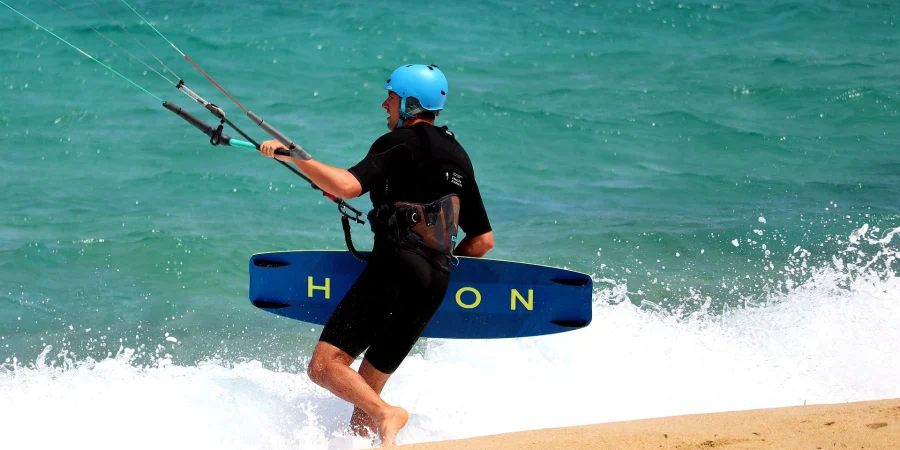The difficulty level of learning kitesurfing can vary from person to person, but generally speaking, it is considered a sport that requires time, practice, and proper instruction to become proficient in.
Here are some factors to consider when evaluating the difficulty of learning kitesurfing:
1. Wind knowledge: Understanding wind patterns, wind strength, and how to harness wind power effectively is essential for kitesurfing. Learning about wind conditions and safety is a crucial part of the learning process.
2. Kite control: Learning to control the kite is fundamental. This involves mastering how to steer, launch, and land the kite, as well as performing maneuvers like power strokes and depowering.
3. Board skills: Once you can control the kite, you’ll need to focus on board skills, such as riding, turning, and maintaining balance while on the water.
4. Body coordination: Kitesurfing requires good coordination between your upper and lower body, as you’ll need to manage both the kite and the board simultaneously.
5. Safety awareness: Kitesurfing can be an extreme sport, so understanding safety procedures and having proper equipment is crucial to prevent accidents.
6. Water confidence: If you are not already comfortable in the water, it may take some time to build confidence and ease with the environment.
With the right guidance and practice, many people can learn to kitesurf within a relatively short period, typically a few days to a couple of weeks of dedicated learning. Taking lessons from certified instructors is highly recommended as they can teach you the proper techniques, safety guidelines, and help you progress faster.
It’s important to note that while some people may pick up kitesurfing quickly, others might find it more challenging. Nevertheless, with patience, determination, and a focus on safety, many people find kitesurfing to be an exhilarating and rewarding sport.


Leave a Reply